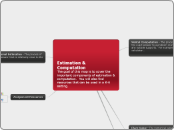jonka Renee Deegan 11 vuotta sitten
202
Estimation
The focus is on the essential components of estimation and computation, especially for K-6 educational settings. It delves into various mental computation techniques, such as compensation, counting on and back, and breaking apart numbers, which help simplify complex calculations.









